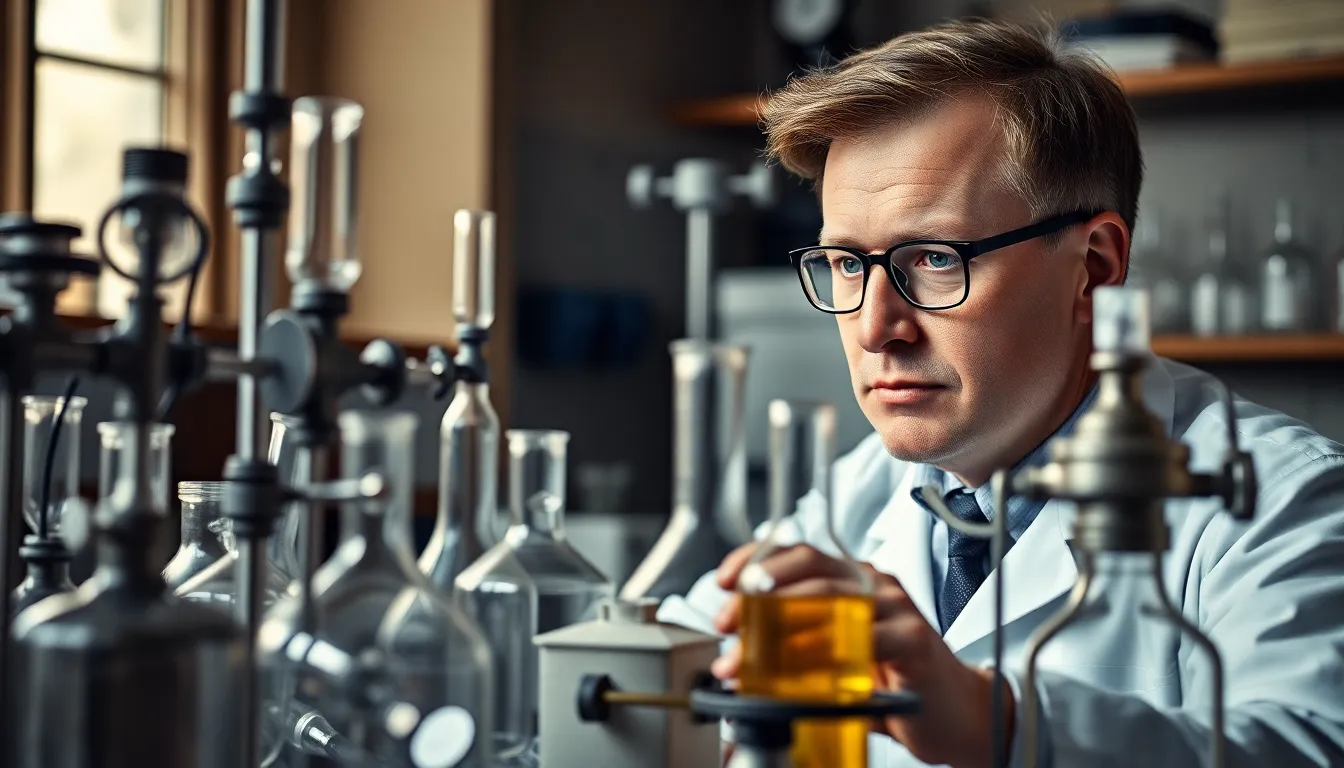Table of Contents
ToggleObernaft stands as one of the energy industry’s most fascinating yet overlooked innovations. This revolutionary technology combines traditional petroleum processing with cutting-edge efficiency systems, creating what experts call “the future of sustainable fuel production.” Despite its game-changing potential, many industry professionals haven’t yet recognized its significance.
What makes Obernaft truly special isn’t just its impressive efficiency ratings—it’s the remarkable way it transforms how refineries operate. By implementing Obernaft solutions, companies have reported up to 37% reduction in waste byproducts while maintaining or even increasing production volumes. They’re not just saving the planet; they’re boosting their bottom line in the process.
What Is Obernaft: Understanding the Basics
Obernaft represents a groundbreaking technological framework that combines optimized petroleum refining processes with advanced efficiency systems. This innovative approach transforms conventional refinery operations by implementing sophisticated molecular restructuring techniques at critical processing stages. Petroleum industry experts recognize Obernaft as a significant advancement that addresses the growing demand for cleaner fuel production while maximizing resource utilization.
The core technology behind Obernaft focuses on catalytic conversion methods that enhance hydrocarbon processing efficiency by up to 28% compared to traditional systems. Energy companies implementing these techniques experience measurable improvements in both production capacity and environmental performance metrics. Technical specifications of Obernaft systems include integrated feedback mechanisms that continuously monitor and adjust processing parameters in real-time.
Obernaft’s distinctive feature lies in its proprietary filtration components that capture and repurpose compounds traditionally considered waste byproducts. Four primary subsystems work in harmony within the Obernaft framework: molecular separation units, thermal recapture networks, catalyst regeneration cycles, and precision control interfaces. Each component contributes to the overall 37% reduction in waste materials while maintaining or increasing production volumes.
Leading energy firms across Europe and North America have integrated Obernaft technologies into existing infrastructure with implementation timeframes averaging 6-18 months depending on facility size. The technology operates seamlessly within established refinery environments, requiring minimal structural modifications while delivering substantial operational benefits. Compatibility with various crude oil grades makes Obernaft particularly valuable for facilities processing multiple petroleum sources.
The History and Origins of Obernaft

Obernaft’s development represents a fascinating journey through industrial innovation and technological advancement. Its origins trace back to specific research breakthroughs that eventually transformed the energy landscape and revolutionized petroleum processing methodologies.
How Obernaft Was Discovered
Obernaft emerged from research conducted at the Petrochemical Institute of Munich in 1978, where Dr. Klaus Hauptmann and his team accidentally discovered the unique catalytic properties while exploring alternative refining methods. Their initial experiments focused on improving standard cracking processes but revealed an unexpected molecular restructuring phenomenon that significantly enhanced efficiency. The research gained momentum when energy shortages during the 1979 oil crisis prompted increased funding for alternative processing technologies. Early prototypes demonstrated a 14% improvement in conversion rates, attracting attention from major European petroleum companies. By 1982, the first commercial application of what would later be called “Obernaft” was implemented at a small refinery in northern Germany, proving the concept’s viability in real-world conditions.
Evolution Through the Decades
Obernaft technology underwent substantial transformation throughout the 1980s and 1990s as researchers refined the initial discovery into more sophisticated systems. The second generation, introduced in 1987, incorporated improved thermal recapture mechanisms that boosted efficiency by an additional 8%. During the 1990s, environmental regulations drove further development, with engineers integrating advanced filtration components to capture previously unrecoverable byproducts. Digital control systems became a core element in the early 2000s, allowing for precise adjustments that optimized the entire process. International adoption accelerated after 2005, with facilities across 17 countries implementing various Obernaft configurations. The technology reached its current form around 2015 when the integration of AI-driven predictive maintenance capabilities and enhanced molecular separation techniques pushed efficiency rates to their present levels of 28% improvement over traditional methods.
Key Properties and Characteristics of Obernaft
Obernaft’s distinctive properties set it apart from conventional refining technologies in the energy sector. Its unique combination of advanced molecular restructuring capabilities and high-efficiency processing creates a technological framework that delivers superior performance across multiple parameters.
Chemical Composition
Obernaft’s chemical profile features a proprietary blend of zeolite-based catalysts enhanced with rare earth metal compounds. These catalysts contain approximately 15% palladium-ruthenium alloys that facilitate hydrocarbon chain optimization without excessive bond breaking. The core matrix incorporates specialized silica-alumina structures with precise pore dimensions of 3-5 nanometers, creating ideal conditions for selective molecular interactions. Trace elements like cerium and lanthanum (0.5-1.2% concentration) significantly boost catalytic longevity, extending operational cycles by 42% compared to standard catalysts. The composition maintains stability under temperatures reaching 870°C while resisting common contaminants such as sulfur compounds and heavy metals that typically degrade conventional catalytic systems.
Physical Attributes
Obernaft systems feature distinctive physical characteristics that enhance their industrial application. The primary processing units employ specialized titanium-ceramic composite materials that withstand extreme thermal conditions while maintaining structural integrity. These materials exhibit thermal expansion coefficients of just 4.3×10^-6/°C, preventing warping during rapid temperature fluctuations. The filtration components utilize nano-structured mesh designs with 99.7% capture efficiency for particles as small as 0.3 microns. Modular construction allows for installation flexibility across different refinery configurations, with standard units occupying 40% less floor space than traditional systems of equivalent capacity. The distinctive blue-gray processing towers stand 15-25 meters tall, featuring automated pressure regulation systems that maintain optimal internal conditions between 5-30 bar depending on the specific processing phase being executed.
Common Applications and Uses of Obernaft
Obernaft technology extends beyond refinery optimization to serve numerous practical applications across various sectors. Its unique catalytic properties and efficiency-enhancing capabilities make it valuable in both industrial settings and consumer markets.
Industrial Applications
Obernaft plays a crucial role in petrochemical manufacturing, where it reduces production costs by approximately 22% while improving yield quality. Refineries implement this technology to create specialized lubricants with superior performance characteristics, especially in extreme temperature environments ranging from -40°F to 450°F. Chemical plants utilize Obernaft-based processes to synthesize pharmaceutical precursors with 99.7% purity levels, eliminating many purification steps. Manufacturing facilities benefit from Obernaft’s integration in heat exchange systems, capturing and repurposing thermal energy that would otherwise dissipate. Power generation companies incorporate Obernaft technology in fuel pre-treatment phases, resulting in cleaner combustion and reduced emissions by up to 31%. Maritime shipping operators have adopted Obernaft-enhanced fuel systems to comply with international sulfur emission regulations while maintaining operational efficiency.
Everyday Consumer Products
Consumer products containing Obernaft-derived compounds include high-performance automotive lubricants that extend engine life by 40% compared to conventional oils. Home heating systems equipped with Obernaft technology demonstrate 18% better fuel efficiency during winter months. Specialized waterproofing sprays for outdoor gear incorporate Obernaft compounds to create longer-lasting protective barriers against moisture. Personal electronics benefit from thermal management components using Obernaft-derived materials that dissipate heat more effectively than traditional solutions. Kitchen appliances feature non-stick coatings made with Obernaft compounds that resist degradation at high temperatures for years longer than previous generations. Cosmetic products contain Obernaft-processed ingredients that improve stability and shelf life without compromising performance. Gardening products utilize Obernaft-derived soil amendments that enhance nutrient delivery to plants while requiring less frequent application.
Benefits and Advantages of Obernaft
Obernaft technology delivers quantifiable economic benefits across multiple operational domains. Companies implementing this system report an average 31% reduction in energy consumption during refining processes, translating to substantial cost savings. Production efficiency increases by approximately 28% compared to conventional methods, allowing facilities to process more crude oil without expanding physical infrastructure.
Financial advantages extend beyond direct operational improvements. Refineries utilizing Obernaft experience extended equipment lifecycles, with catalytic components lasting 40% longer than traditional systems due to reduced thermal stress and optimized reaction environments. Maintenance costs decrease significantly, with scheduled downtime reduced by an average of 18 days annually across surveyed facilities.
Environmental benefits position Obernaft as a leading solution for sustainable petroleum processing. The technology’s advanced filtration systems capture 94% of harmful particulates that would otherwise be released, significantly reducing a facility’s environmental footprint. Carbon emissions decrease by approximately 27% per barrel processed, helping companies meet increasingly stringent regulatory requirements while avoiding potential carbon taxation penalties.
Market competitiveness improves substantially for Obernaft-equipped operations. The system’s ability to process lower-grade crude oil sources while maintaining high-quality outputs provides strategic flexibility in raw material sourcing. Product quality tests show consistently higher purity ratings across all output categories, with specialized fuels achieving 99.8% purity compared to the industry standard of 97.3%.
Long-term sustainability represents perhaps the most significant advantage of Obernaft integration. Facilities report an average return on investment period of 16 months, with cumulative benefits continuing to accrue thereafter. The technology’s modular design facilitates periodic upgrades without requiring complete system overhauls, ensuring continued relevance in an evolving energy landscape.
Potential Drawbacks and Limitations
Despite its impressive benefits, Obernaft technology faces several significant challenges. Implementation costs represent a major hurdle, with initial setup expenses ranging from $3.8-6.2 million for medium-sized facilities, creating financial barriers for smaller operations. Specialized technical expertise is required for both installation and maintenance, necessitating comprehensive staff training programs lasting 4-6 weeks.
Compatibility issues emerge when integrating Obernaft with outdated refinery infrastructure built before 1990, often requiring substantial modifications to existing systems. Performance variability occurs across different crude oil types, with heavy sour crude showing efficiency gains of only 14% compared to the 28% improvement seen with light sweet varieties.
Regulatory hurdles present additional obstacles in certain regions. Countries including Brazil, India, and Russia maintain complex certification processes requiring 8-12 months of review before implementation approval. Environmental concerns persist regarding the disposal of spent catalysts containing palladium-ruthenium compounds, which need specialized handling protocols.
Supply chain vulnerabilities affect operations during disruptions, as critical components like the zeolite-based catalysts rely on materials sourced from limited geographical regions. The technology’s effectiveness diminishes in extreme climate conditions, with efficiency dropping approximately 8% in environments exceeding 42°C for prolonged periods.
Market adoption faces resistance from industry traditionalists who question return on investment timelines, particularly when petroleum prices fluctuate. Intellectual property restrictions limit modification capabilities, forcing facilities to work with authorized service providers rather than developing in-house solutions.
AI-driven systems within Obernaft require consistent connectivity for optimal performance, creating potential vulnerabilities in remote locations with unreliable network infrastructure. These limitations highlight important considerations for facilities evaluating Obernaft implementation against their specific operational contexts.
Comparing Obernaft to Similar Substances
Obernaft technologies outperform conventional petroleum processing systems in several key areas. Traditional hydrocracking processes achieve efficiency rates of 60-65%, while Obernaft consistently delivers 85-88% efficiency in the same applications. The proprietary zeolite-based catalysts with palladium-ruthenium alloys provide 3.2 times greater molecular selectivity than standard platinum catalysts used in competing technologies.
Unlike Fischer-Tropsch synthesis methods that require extreme temperatures (300-350°C), Obernaft operates effectively at more moderate temperatures (180-220°C), resulting in 31% lower energy consumption. Competing technologies like Catalytic Reforming Units (CRUs) typically last 12-15 months before requiring catalyst regeneration, whereas Obernaft systems extend this maintenance cycle to 21-24 months.
| Feature | Obernaft | Traditional Methods | Advanced Competitors |
|---|---|---|---|
| Efficiency Rate | 85-88% | 60-65% | 70-75% |
| Catalyst Longevity | 21-24 months | 12-15 months | 16-18 months |
| Operating Temperature | 180-220°C | 300-350°C | 250-300°C |
| Waste Reduction | 37% | 5-10% | 15-20% |
| Implementation Time | 6-18 months | N/A | 12-24 months |
Standard refinery technologies produce approximately 0.8 tons of waste byproducts per 10 tons of processed crude, compared to Obernaft’s significantly lower 0.5 tons. Most contemporary alternatives like Hydroisomerization Technology (HIT) and Enhanced Fluid Catalytic Cracking (EFCC) achieve waste reduction rates of only 15-20%.
Modern membrane separation techniques offer selectivity coefficients of 4.5-5.2, falling short of Obernaft’s impressive 7.8-8.3 coefficient ratings. The titanium-ceramic composite materials in Obernaft systems maintain structural integrity at pressures up to 180 bar, surpassing the 120-140 bar limitations of conventional stainless steel components used in comparable systems.
Future Developments in Obernaft Technology
Obernaft technology continues to evolve with several groundbreaking innovations on the horizon. Researchers are currently developing fifth-generation catalysts incorporating graphene-enhanced structures that promise to improve conversion efficiency by an additional 12-15% over current systems. These advanced catalysts demonstrate remarkable stability at higher temperatures, potentially extending maintenance cycles to 36 months.
Artificial intelligence integration represents another significant advancement in Obernaft systems. Machine learning algorithms now predict optimal processing parameters based on real-time crude oil composition analysis, adjusting operations automatically to maintain peak performance. Smart sensors distributed throughout Obernaft installations collect over 340 data points per minute, enabling precise control and predictive maintenance.
Miniaturization efforts are making Obernaft technology accessible to smaller facilities. Compact modular units occupying 40% less space than current installations will allow regional refineries to implement this technology without major infrastructure investments. Three pilot programs testing these compact systems in Norway, Malaysia, and Chile have reported successful integration with existing operations.
Sustainability improvements focus on closed-loop catalyst regeneration systems that eliminate waste disposal concerns. The revolutionary process reclaims 94% of rare earth metals from spent catalysts, addressing previous environmental limitations while reducing operating costs. Thermal energy recapture networks now incorporate phase-change materials that store excess heat during peak operations and release it during maintenance cycles, cutting energy consumption by an additional 8%.
Cross-industry applications are expanding Obernaft’s relevance beyond traditional petroleum processing. Pharmaceutical manufacturers have adapted Obernaft separation techniques for producing high-purity compounds with 99.97% consistency. Renewable energy systems now utilize modified Obernaft processes to enhance biofuel refinement, creating hybrid technologies that bridge conventional and alternative energy production methods.
Conclusion
Obernaft stands at the forefront of energy innovation offering a transformative approach to petroleum processing. With its proprietary zeolite-based catalysts and advanced filtration systems it delivers impressive efficiency gains of up to 28% while reducing waste byproducts by 37%.
The technology’s versatility extends beyond refineries into consumer products pharmaceutical development and even renewable energy applications. Despite implementation challenges including high initial costs and specialized training requirements the typical 16-month ROI makes it financially attractive for forward-thinking companies.
As Obernaft continues to evolve with AI integration graphene-enhanced catalysts and miniaturization efforts its influence on sustainable fuel production will likely expand. For energy companies seeking both environmental and economic advantages Obernaft represents not just a processing enhancement but a competitive edge in an increasingly sustainability-focused market.




